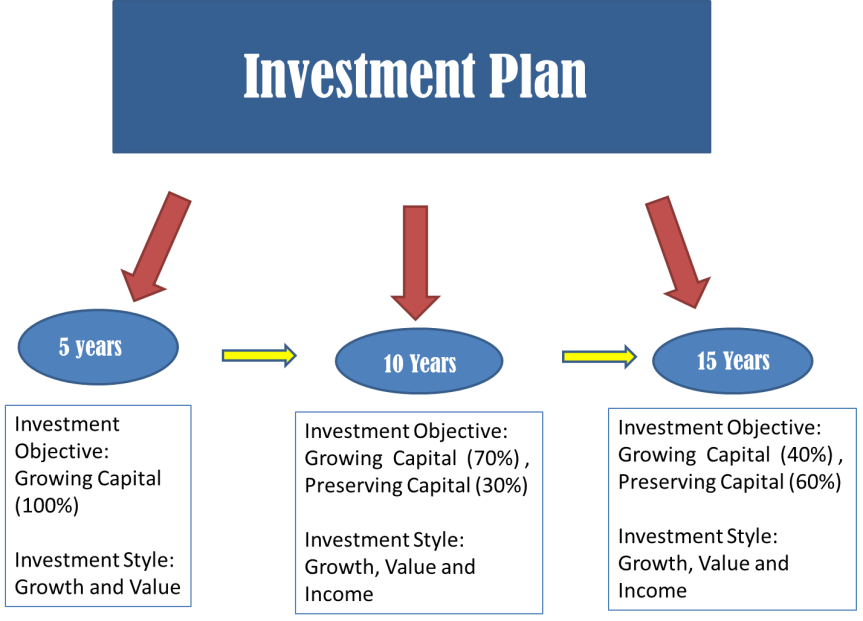Hi all, apologies for not posting for a while now. Peak period of outfields week in week out made me procrastinate for quite a bit haha. I realised it’s been about 1 year since I started investing. A lot had happen and I am thankful for the many lessons I have learnt over the course of the year. All that happened, made me stronger and allow me to continuously revise my own investing strategy. Today, I shall share about my own investing strategy. How I identify potential investment targets, what I use to time my entry into a stock and when to sell.
1) Investment Objectives
Previously, I shared the importance to know your own investment objectives before being able to craft out your own investment plan.

Your own investment strategies are the actions you are going to take in your investment plan. Just a recap, for now my investment objective remains to grow my capital. From a measly sum of $300 at the very start of my investment journey, I am targeting to grow it to at least $10k before I enter the university. (Of course along the way, I added more money into my investment.) As of now I have about $6k vested in the stock market and sitting on a 20% realised return so far. Below is my investment strategy I am using to reach my objectives.
2) How I pick my investment targets
Personally, I like to look for companies with low Price to Earnings (PE) ratio with huge growth catalysts ahead. Companies that are of such qualities fill up about 60% of my portfolio. The reason why I adore such a company is because it is both undervalued and have ample of growth characteristics. (Killing 2 birds with 1 stone!)
Of course, sometimes it’s hard to find such a company. But all you need is that 1 or 2 opportunities to give you astronomical gains. Examples are companies like AEM which was previously PE of 8-9 (undervalued) and had a innovative product (growth). When the market comes to realise the company’s potential, the share price will readjust upwards.
After finding that few value-growth companies, I like to diversify across themes. By that, I like to research their growth areas and see if it fits any major trends happening in the world or in Singapore. For instance, now the One Belt One Road is quite a big thing, companies (construction, railway builder etc) that are undervalued and have operations in this area will potentially stand to gain from the growth opportunities available. Here’s another example, I may want to look at a more defensive theme. Companies that are undervalued and are in the industry that provides services to consumers, governments etc are all plausible candidates.
Of course, after shortlisting the few that make the cut. Checking their fundamentals is next and even better if there has been insider buying. (Here’s how I evaluate a fundamentally sound company)
3) Timing my entry
After all that filtering process, you should probably be left with a list of less than 4 companies. Timing my entry to buy into the stock is next. How should I buy at the correct timing. For me, some technical indicators and the chart have helped me quite a bit.
I like to enter my first position after a period of consolidation (where the price have been around the same level for a few weeks) and with low volume.

I use the weekly chart for a better long term view since I usually hold my position for a few months at least. The red rectangle is the period of consolidation where prices close in very tight range. And if you look at the blue circle, the volume is below average for those few weeks. This represents a rather good opportunity to enter. I like to see consolidation period as a spring board to propel you upwards. But, how do we tell if price will go up after consolidation and not down?

I use the MACD indicator to see if there’s a possible uptrend coming. (I am not going to go too in depth into indicators) When the blue line cross the red line as shown in the circles, it is a possible indication of an uptrend. For me, I only use indicators as an additional reference after I spot a consolidation zone.
4) When to sell?
Haha to be honest, this question always baffles me. I myself am also not a good seller. There are a few times a stock raced upwards after I sold away all my position. Sometimes, I get to emotionally attached to a stock and tend to sell too late. Hence, this portion is something I am constantly still learning. However I do have a few ground rules to follow.
- Sell when the undervalued stocks become overvalued.
- Sell at your stop loss.
- Sell when the business is no longer attractive or fundamentally sound.
I don’t really use technical indicators to predict when to sell, because I believe that as long as the business’s value and growth aspects remain intact, a downtrend should be temporary.
In conclusion,
planning your own investment strategies to achieve your own objectives is important. You need to know what stocks you are looking into, when to enter and when to sell. Only then will it translate into gains in your portfolio. Hopefully for those who started investing, you will be empowered to write out your own investment strategies after reading my own strategies. Writing it out is really effective, as it makes sure you do not get flustered when anything happens in the market.
